
Introduction to Hiking Equipment
Hiking is one of the most rewarding outdoor activities, allowing you to immerse yourself in nature, boost your physical fitness, and relieve stress. However, the experience can quickly turn sour without the right equipment. Proper gear not only enhances your comfort and safety but also ensures that you can enjoy your hike to the fullest.
Importance of Proper Gear
Wearing the right gear can spell the difference between an exhilarating adventure and an uncomfortable challenge. Each item plays a vital role in protecting you from the elements, making your hike more enjoyable. Here’s why investing in proper gear is crucial:
- Safety: Proper equipment can prevent injuries. For instance, a good pair of hiking boots provides ankle support and minimizes the risk of slips and falls.
- Comfort: Quality hiking clothes wick moisture and provide insulation, keeping you comfortable whether you’re sweating on the trail or sitting for a break.
- Performance: Lightweight and durable gear improves your performance. A good backpack distributes weight evenly, making it easier to hike longer distances without fatigue.
Picture yourself halfway up a challenging trail, feeling fatigued and hot. If you were wearing the right breathable clothing and using a well-fitted backpack, your experience could have been much different.
Choosing the Right Equipment for Your Needs
When it comes to hiking equipment, one size does not fit all. It’s essential to choose gear that suits your specific needs, activity level, and the environment you’ll be in. Here are a few pointers to help you select the right equipment:
- Understand the Terrain: Are you hiking in the mountains or flat terrain? Different landscapes require different gear. For rocky trails, sturdy footwear is essential, while lighter shoes can work for smooth paths.
- Consider the Weather: Check the forecast and prepare accordingly. Waterproof jackets are essential for wet conditions, while sun protection is crucial for sunny hikes.
- Identify Your Hiking Style: Think about how you plan to use your equipment. Are you going for a day hike or an overnight adventure? Daypacks are perfect for single-day trails, while larger backpacks are necessary for extended trips.
- Trial and Error: Don’t hesitate to try different gear. For example, consider renting equipment for your first few hikes to see what works best before committing to a purchase.
- Community Insights: Connect with local hiking groups or forums to learn from seasoned hikers about the best equipment for your specific routes and conditions.
By taking the time to assess your needs and understanding the significance of proper gear, you’ll not only elevate your hiking experience but also prepare yourself for unavoidable challenges, enhancing both your safety and enjoyment. With that in mind, let’s dive into the essential clothing you’ll need for your next adventure!
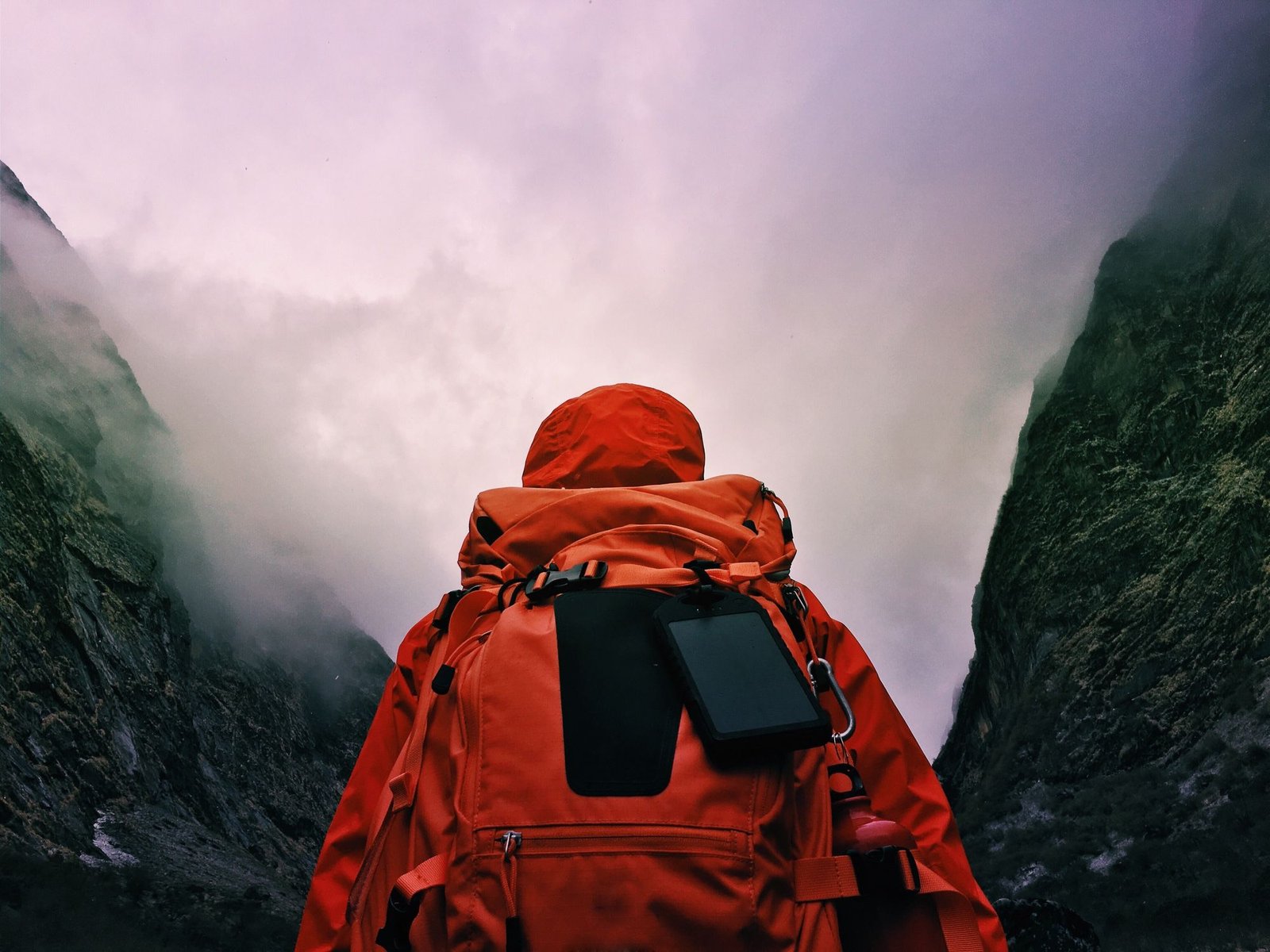
Continuing from our exploration of hiking equipment, let’s dive into one of the most crucial aspects of ensuring a successful outdoor adventure: your clothing. Proper apparel can significantly enhance your comfort, safety, and enjoyment while hiking.
Choosing the Right Apparel
When it comes to choosing the right apparel for hiking, it’s not just about fashion; it’s about functionality. The right clothing will protect you from different environmental conditions and keep you comfortable on the trail. Here’s a breakdown of the essential clothing items to consider:
- Base Layer: This is the first layer you put on, directly against your skin. Look for moisture-wicking materials like synthetic fibers or merino wool, which will keep you dry by pulling sweat away from your body. Avoid cotton, as it retains moisture and can make you chill.
- Insulating Layer: Depending on the weather, this layer is meant to keep you warm. Fleece or down jackets work well as insulating layers. On cool mornings or evenings, having something that provides warmth without bulk is essential.
- Outer Layer: This layer acts as your shield against wind and rain. A good waterproof and breathable shell jacket will keep you dry during unexpected weather changes. Make sure it is lightweight and packable, so it doesn’t weigh you down.
- Bottoms: Choose moisture-wicking and quick-drying materials for your pants or shorts. Hiking-specific pants often come with features such as reinforced knees and zip-off legs for added versatility.
Always consider the climate you’ll be hiking in and plan your clothing accordingly. I remember a hike where I underestimated the weather, and it went from sunny to downpour in minutes. Having the right outer layer made all the difference in staying comfortable throughout the day.
Importance of Layering
Layering is vital because it allows you to adapt to changing weather and varying levels of exertion during your hike. Here’s why layering is so important:
- Regulating Body Temperature: As you hike, your body temperature can fluctuate significantly. Layering helps manage those changes—if you get too hot, you can remove a layer, and if it gets chilly, you can add one back on without having to carry bulky clothing.
- Flexibility: Hiking trails can take you through different environments. By layering, you’re prepared for anything—from the chilly mountain breezes to hot sunny stretches. For instance, I always carry an extra insulating layer in my backpack, ready for when I’m taking a break after an intense climb.
- Moisture Management: When you sweat, it’s essential to have a system that manages moisture. Using a base layer that wicks sweat away ensures that you stay dry, while an outer layer that shields against rain keeps you comfortable.
To summarize, choosing the right apparel and understanding the importance of layering can make or break your hiking experience. Think of it as preparing for anything Mother Nature can throw your way while enjoying the great outdoors. So next time you hit the trails, make sure you’re dressed for success!
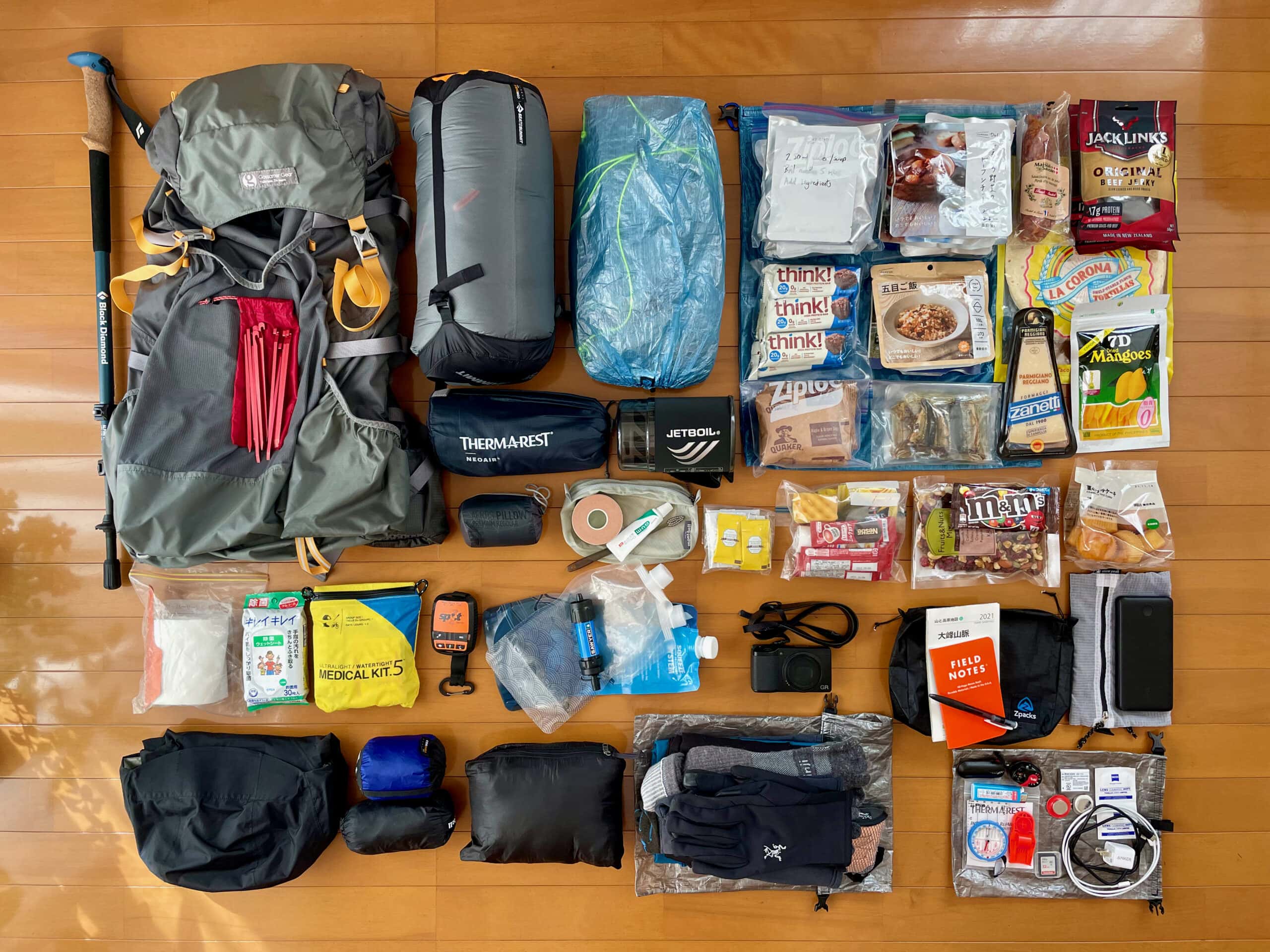
Footwear for Hiking
When it comes to hiking, having the right footwear can make all the difference in your experience. Whether you’re trekking up rocky trails or strolling through lush forests, your boots (and socks) play a crucial role in ensuring comfort, support, and protection. As you continue planning your next outdoor adventure, let’s focus on selecting the right hiking boots and understanding the importance of proper socks.
Selecting the Right Hiking Boots
Choosing the right hiking boots is not just about picking the most stylish pair on the shelf. There are several factors to consider to ensure your feet remain happy over any distance. Here’s a breakdown of what to look for:
- Terrain Consideration: Think about where you’ll be hiking. If you’re planning to tackle rocky, uneven paths, opt for boots with sturdy midsoles and thick outsoles for traction. For gentle, flat trails, lightweight shoes may suffice.
- Waterproof vs. Breathable: If you’re hiking through wet conditions or puddle-laden paths, waterproof boots will keep your feet dry. On the other hand, if your adventure is in a dry, warm climate, breathable boots will help prevent overheating.
- Fit Matters: Always try on boots with the socks you’ll wear while hiking. They should feel snug but not tight; you want some wiggle room for your toes, particularly when going downhill. Testing them out on inclines in-store can also give you a sense of how they’ll perform on the trail.
- Break-in Period: Don’t head straight out on a long hike after buying new boots. Give them time to break in with shorter walks to avoid blisters.
Personally, I remember my first hike in poorly fitted boots — I underestimated the importance of a proper fit and paid the price with throbbing blisters halfway through the trek!
Importance of Proper Socks
While your hiking boots may steal the spotlight, don’t underestimate the crucial role that your socks play. Choosing the right socks can help prevent blisters and provide additional comfort on the trail. When it comes to hiking socks, consider the following:
- Material Matters: Look for socks made of moisture-wicking materials such as merino wool or synthetic blends to keep your feet dry. Cotton socks absorb moisture, leading to blisters and discomfort.
- Padding and Thickness: Depending on your footwear, thickness can impact fit. If you have a snug fit with your boots, go for thinner socks. For slightly looser boots, opt for thicker padding for additional cushioning.
- Height: Crew-length socks are popular among hikers because they prevent your boots from rubbing against your skin.
- Seamless Design: Opt for seamless or flat seams to reduce friction points. This is particularly important if you have sensitive feet.
Remember, the right combination of high-quality boots and socks can enhance your hiking experience, making even the longest hikes enjoyable. So pay attention to these details, and you’ll be well on your way to a more comfortable journey on the trails!
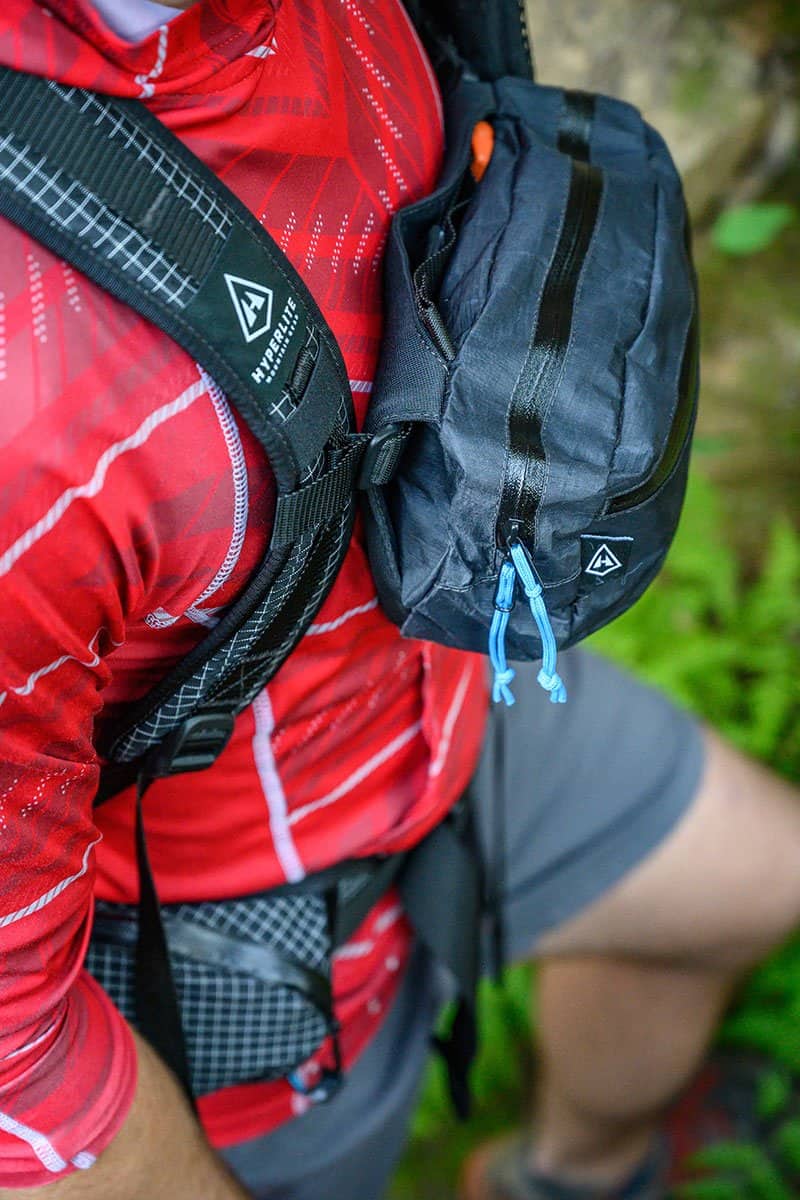
Backpacks are more than just a convenient way to carry your belongings; they are essential to a successful hiking experience. Selecting the right backpack or daypack can make all the difference in your comfort and performance during a hike.
Finding the Right Fit
When it comes to choosing the right backpack, one of the most important factors is fit. An ill-fitting pack can lead to discomfort and fatigue, whereas a well-fitted pack supports your posture and allows you to carry your gear with ease. Here’s how you can find that perfect fit:
- Measure Your Torso Length: Your torso length is crucial for proper fitting. Stand straight and measure from the nape of your neck (where your spine meets your skull) to the small of your back. Use this measurement to find a backpack that matches your size.
- Try Before You Buy: If possible, visit a store that allows you to try on various packs. Adjust the straps and hip belt to ensure they conform to your body shape. An ideal backpack should feel stable against your back and not move around excessively as you walk.
- Consider Load Distribution: Look for packs with a hip belt that transfers weight from your shoulders to your hips. This is particularly beneficial on long hikes, where fatigue can set in quickly.
- Test the Features: Different packs come with various features like hydration reservoirs, extra pockets, or adjustable straps. Think about what aspects matter most to you, and test them out.
Remember, spending a bit of time finding the right fit will pay off in comfort during your hike!
Packing Essentials for a Day Hike
Once you’ve chosen the right backpack, it’s time to consider what to pack for your day hike. Your backpack should be organized, making it easy to access essential items without digging through everything. Below is a list of essentials you should always consider packing:
- Water: Hydration is key. Carry enough water for your hike—typically 2 liters for a full day. Consider using a hydration bladder for convenient sipping.
- Snacks and Nutrition: Pack lightweight, high-energy snacks. Some great options are:
- Trail mix
- Energy bars
- Fresh fruits (like apples or bananas)
- Jerky
- First Aid Kit: A small first aid kit should always come along. Include basic supplies like band-aids, antiseptic wipes, and pain relief medication.
- Map and Compass/GPS: Navigation tools are critical, even if your trail seems straightforward. Keep a paper map and compass alongside any electronic devices.
- Extra Layer: Weather can change quickly in the outdoors. A lightweight jacket or fleece can prevent you from getting cold if the temperature drops.
- Multi-tool: A compact multi-tool can handle unexpected repairs or needs.
- Emergency Gear: A whistle, a signal mirror, or a flashlight can be crucial in an emergency situation.
- Personal Items: Don’t forget personal items you’ll need, like sunscreen, insect repellent, and any necessary medications.
- Waste Management: Bring a small bag to pack out what you pack in to adhere to Leave No Trace principles.
By carefully selecting your backpack and thoughtfully packing your essentials, you enhance not just your comfort but also your overall hiking experience. Enjoy your adventures!
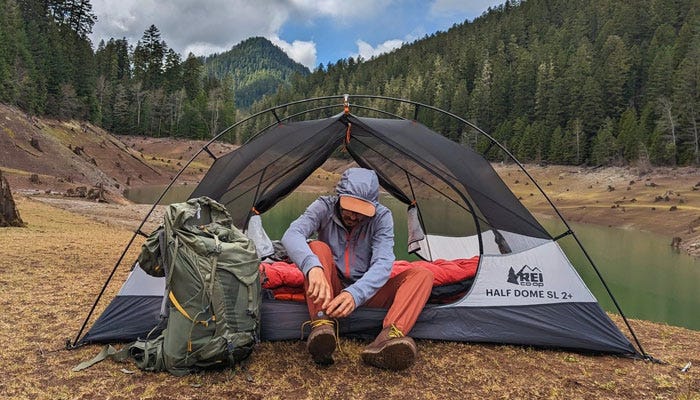
Navigation Tools
When you’re out in the wilderness, getting lost is the last thing you want to experience. To ensure you stay on track and make the most of your adventure, having a solid understanding of navigation tools is key. Let’s delve into the essentials: maps, compasses, and GPS devices.
Understanding Maps and Compasses
Maps and compasses have been the go-to navigation tools long before smartphones and GPS devices took over. There’s something gratifying about unfolding a detailed map of the area and plotting your route. Here’s how to make the best use of these traditional tools:
- Reading a Map: Pay attention to the legend, scale, and topographical features. Learning to read contour lines can help you gauge elevation changes and terrain types. Remember, color codes often indicate different land types, such as forests, water bodies, roads, and trails.
- Using a Compass: A compass is your reliable partner in navigation. To get started:
- Hold the compass horizontally and rotate it until the needle aligns with the north marker.
- Determine your bearing by selecting a point on the map and turning yourself to face it. Follow that direction in the field.
Personal Anecdote: I remember trying to navigate through a dense forest using only my map and compass. Despite feeling a bit intimidated at first, once I figured out how to read the map and get my bearings, it was incredibly empowering. I found that these tools enhanced my connection with the outdoors and boosted my confidence in navigating unknown territories.
Importance of GPS Devices
While maps and compasses are great, GPS devices offer a high-tech advantage that simplifies navigation immensely. Here’s why they’ve become a staple for many hikers:
- Real-Time Location Tracking: GPS devices provide your exact coordinates, making it easy to pinpoint your location at any time.
- Preloaded Maps: Many devices come with maps of trails, landmarks, and important info, allowing for quick reference without having to pull out a physical map.
- Route Planning: You can plan your hike ahead of time, marking waypoints and creating a detailed itinerary. This serves as a great backup plan in case you wander off the trail.
However, it’s important to remember that technology can fail. Battery life, terrain conditions, and lack of signal can all hamper your GPS device’s performance. That’s why it’s wise to have a backup plan, like knowing how to use a map and compass. In summary, blending traditional navigation tools with modern technology enhances your hiking experience significantly. Whether you’re plotting a course using a compass or relying on the efficiency of a GPS device, being equipped with effective navigation tools ensures you’re not just wandering — you’re adventuring with purpose.
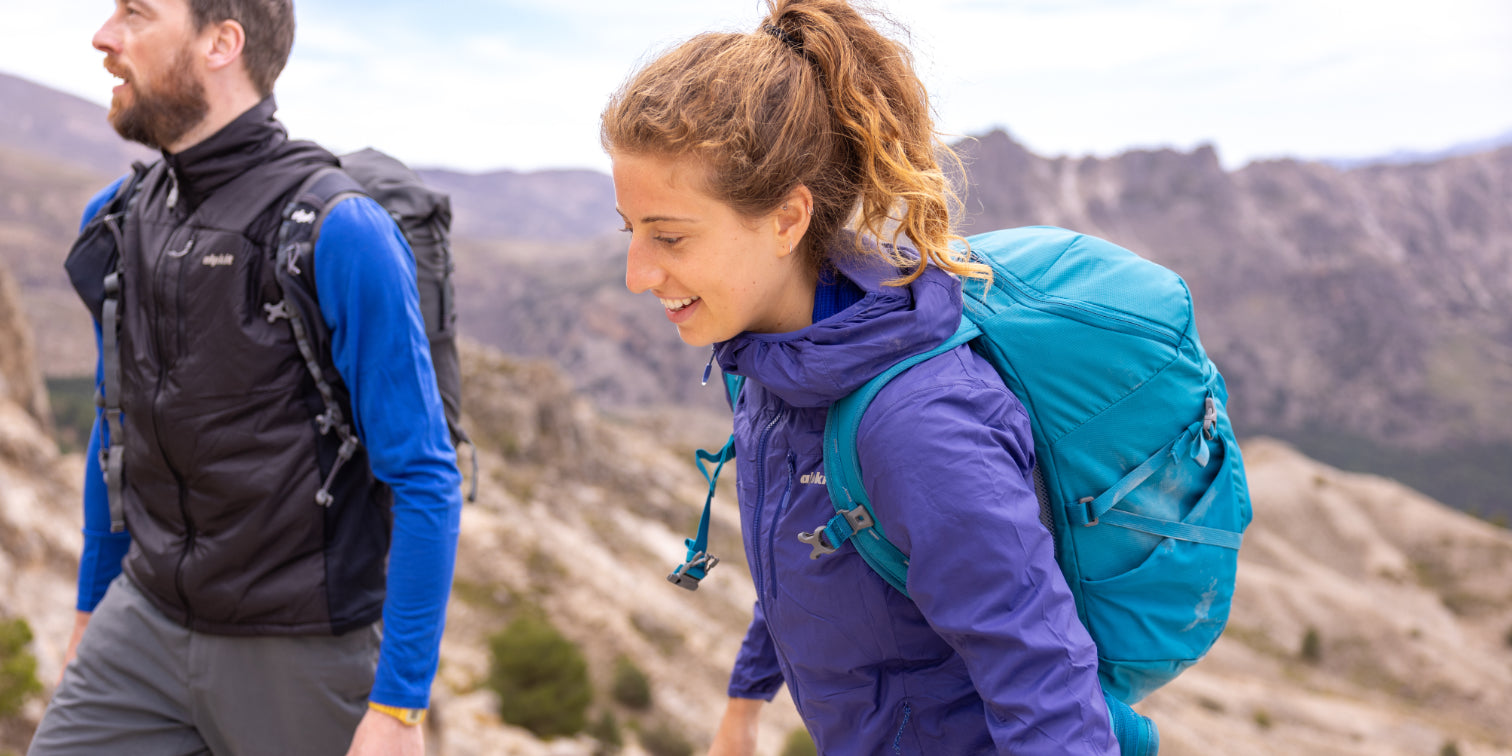
Hydration and Nutrition
After ensuring you have the proper navigation tools, it’s essential to focus on hydration and nutrition during your hikes. Staying hydrated and energized is crucial for your safety and enjoyment on the trail.
Choosing the Right Water Bottles
When it comes to hiking, having the right water bottle can make a significant difference. You don’t want to carry excess weight, but you also need to ensure you have enough water to keep you hydrated. I’ve learned this the hard way during a 10-mile hike when I underestimated my water needs. Here are some tips for selecting the right water bottles:
- Material: Consider whether you prefer plastic, stainless steel, or glass. Stainless steel keeps water cold for hours but can be heavier. Plastic bottles are lightweight but may not keep water chilled for long. Glass is great for taste but can be fragile.
- Capacity: Choose between 16 oz, 32 oz, or even larger bottles, depending on the duration of your hike and access to refill stations. Remember, a typical recommendation is about half a liter of water for every hour of activity.
- Insulation: If you’re hiking in hot weather, insulated bottles can keep your water cool. On colder days, having warm water can make a hike much more enjoyable.
- Convenience Features: Look for easy-to-carry options, like collapsible bottles or those with built-in filters if you need to refill from streams.
Carrying enough water is not only about you; remember to share with your hiking buddies if they forget theirs!
Packing Lightweight Snacks
It’s not just about water—monitoring your snack choices can enhance your hiking experience too. Packing the right lightweight snacks will keep your energy levels up and your spirits high. Consider these snack options:
- Trail Mix: A classic choice! Mix nuts, dried fruits, and a few dark chocolate pieces for a satisfying, energy-boosting snack.
- Energy Bars: Look for bars rich in protein, fiber, and natural ingredients. They provide a quick energy boost without the heaviness.
- Jerky: A savory option packed with protein. It’s lightweight and tasty, making it an ideal choice for satisfying hunger.
- Fresh Fruit: Apples or bananas offer hydration and vitamins. However, choose sturdier fruits that won’t squish in your pack.
- Nut Butter Packs: Portable packs or tubes of nut butter can be consumed on their own or with fruit or crackers for extra energy.
Here’s a quick visual of my go-to hiking snack ideas:
| Snack | Benefits |
|---|---|
| Trail Mix | Energy boost, nutrient-packed |
| Energy Bars | Convenient, filling |
| Jerky | High in protein |
| Fresh Fruit | Refreshing and hydrating |
| Nut Butter Packs | Protein and healthy fats |
Remember to consider the weight and packaging of your snacks. Minimizing waste is as important as keeping your backpack light. In summary, selecting the right water bottles and packing lightweight snacks are essential components for a successful hike. By prioritizing hydration and nutrition, you’ll ensure that you’re not only prepared but also ready to tackle the trails ahead!
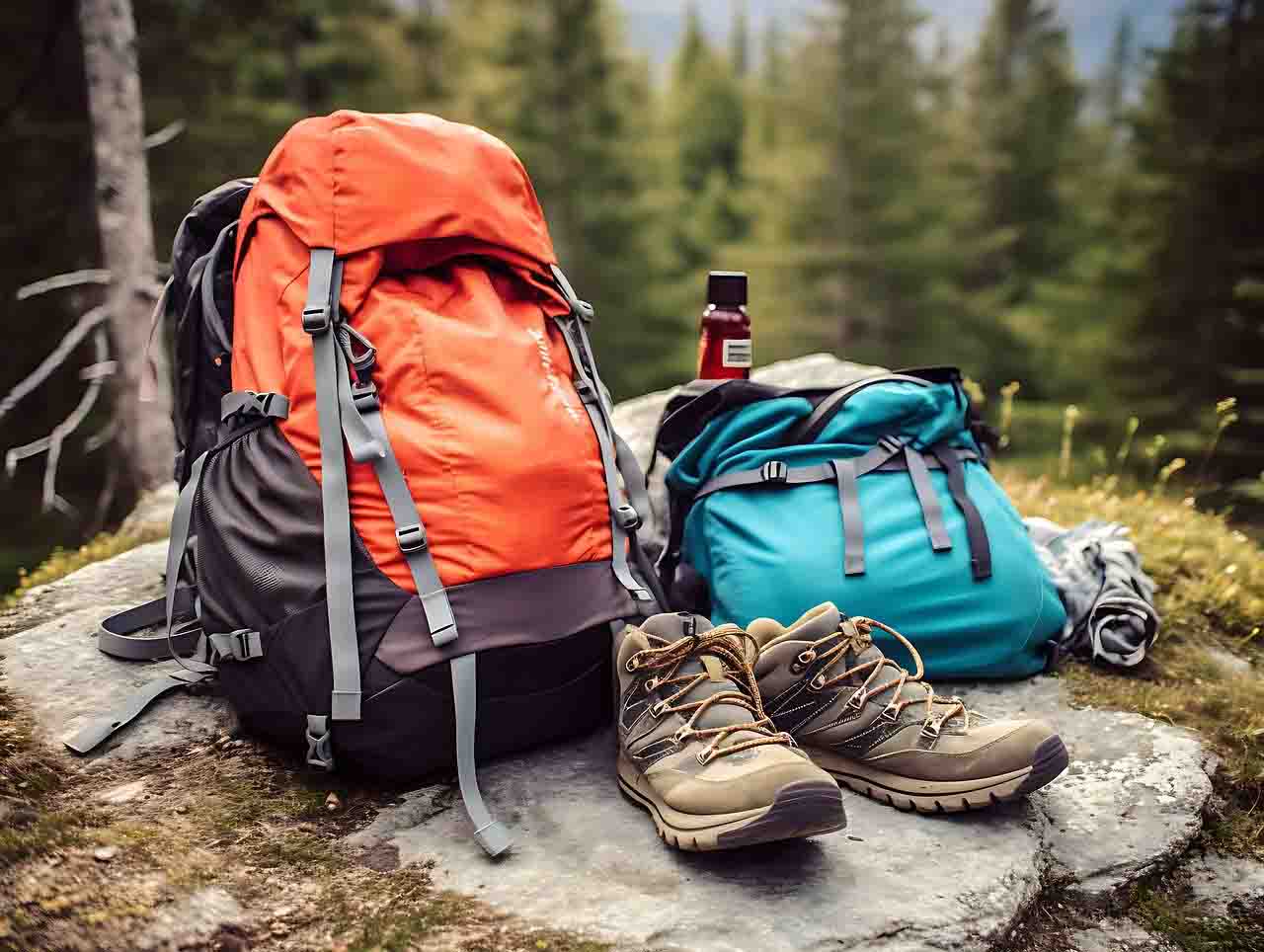
Continuing our exploration of essential hiking equipment, let’s shift our focus to shelter and sleeping gear. As enjoyable as the daytime hike can be, a good night’s sleep under the stars is critical to recharging for your next adventuring day.
Choosing the Right Tent
Selecting the right tent can make all the difference between a peaceful night amidst nature and a frustrating battle against elements. Here are some key factors to consider when choosing your tent:
- Size: Think about how many people will be sleeping in the tent. A two-person tent can feel cramped for friends who tend to toss and turn. If you’re out with family or anticipate some additional gear, consider a larger tent.
- Seasonality: There are tents designed for different seasons.
- Three-season tents are ideal for spring, summer, and fall.
- Four-season tents, on the other hand, are sturdier and can withstand harsh winter conditions.
- Weight: If you’re backpacking, a lightweight tent is essential. Not only will it make your load easier to carry, but it will also save precious space in your backpack.
- Setup: Look for a tent that is easy to pitch. After a long day of hiking, the last thing you want is to spend hours wrestling with tent poles and rain flies.
For my recent trip to the mountains, I opted for a three-season tent that made a world of difference. It was lightweight and easy to set up, which allowed me to relax and enjoy the sunset rather than stress about my accommodations.
Importance of Proper Sleeping Bags
Now that you have your tent sorted, let’s discuss sleeping bags, another vital component for your comfort during those chilly nights outdoors. The right sleeping bag can help you stay warm, provide coziness, and ensure a good night’s sleep. Consider the following when choosing a sleeping bag:
- Temperature Rating: Sleeping bags come with different temperature ratings. Choose one that matches the lowest temperatures you expect to encounter.
- For summer camping, a sleeping bag rated around 35°F is usually sufficient.
- For colder months, consider one rated for 20°F or lower.
- Insulation Type:
- Down insulation is lightweight and compressible, making it easy to pack, but isn’t great if it gets wet.
- Synthetic insulation, on the other hand, dries quickly and retains insulation even when damp, making it a practical choice for unpredictable weather.
- Shape: Getting the right shape is essential too. Mummy bags are excellent for warmth, while rectangular bags offer more room if you tend to move around in your sleep.
I remember using a synthetic bag during a chilly autumn camping trip. Despite the dropping temperatures, I felt snug and warm throughout the night, ready to tackle the trails come morning. In summary, investing time in choosing a quality tent and sleeping bag not only enhances your overall hiking experience but also ensures you’re well-rested for the adventures that await after a peaceful night’s sleep. Happy hiking!

First Aid and Emergency Preparedness
As you delve deeper into your hiking adventures, it’s crucial to think about the unexpected situations that might arise. Whether it’s a minor scrape or a more serious injury, being prepared with the right first aid supplies can make a world of difference. Coupled with effective communication devices, your safety can significantly improve, allowing you to enjoy your adventure with peace of mind.
Essential First Aid Supplies
When packing for a hike, including a well-stocked first aid kit is non-negotiable. I remember my first multi-day hike when I thought a few band-aids would suffice. However, a twisted ankle and a few pesky blisters later, I realized the importance of proper supplies. Here’s a list of essential items you should consider including in your first aid kit:
- Adhesive bandages: Various sizes for minor cuts and scrapes.
- Antiseptic wipes: To clean wounds and prevent infections.
- Gauze pads and tape: For larger wounds that may need to be covered.
- Tweezers: Useful for removing splinters or ticks.
- Pain relievers: Over-the-counter options like ibuprofen or acetaminophen.
- Elastic bandage: Great for wrapping sprains or strains.
- Hydrocortisone cream: To alleviate itching from insect bites or rashes.
- Emergency blanket: Lightweight and useful for warmth.
Each of these items fits easily into a compact kit that can be stored in your backpack, simple yet effective.
Importance of Communication Devices
In the wilderness, quick access to communication can be a lifesaver. Imagine you’re hiking in a remote area and you or someone in your group sustains an injury. Having a reliable way to contact help becomes paramount. Here are some communication tools you might consider:
- Mobile Phone: Most hikers carry smartphones, making them a versatile tool for navigation and emergencies. However, be aware that cell coverage can be spotty in remote areas.
- Two-Way Radios: These are great for larger groups where everyone needs to stay connected. They work even when cell service does not.
- Satellite Phone: If you frequently hike in remote areas with no cell coverage, investing in a satellite phone might be worthwhile.
- Personal Locator Beacons (PLB): In an emergency, these devices can send distress signals to rescuers.
- Whistle: Lightweight and effective, a whistle can carry much farther than your voice in the event of an emergency.
By pairing your first aid supplies with effective communication devices, you create a supportive safety net that enhances your hiking experience. Remember, preparation is key. The more equipped you are for unexpected mishaps, the more you can focus on the incredible scenery and adventures that lie ahead. Always encourage your hiking companions to remain aware of their surroundings and equip themselves similarly, fostering a culture of safety and preparedness on your excursions. Your hiking experience will not only be safer but far more enjoyable when you know you’re ready for whatever comes your way.
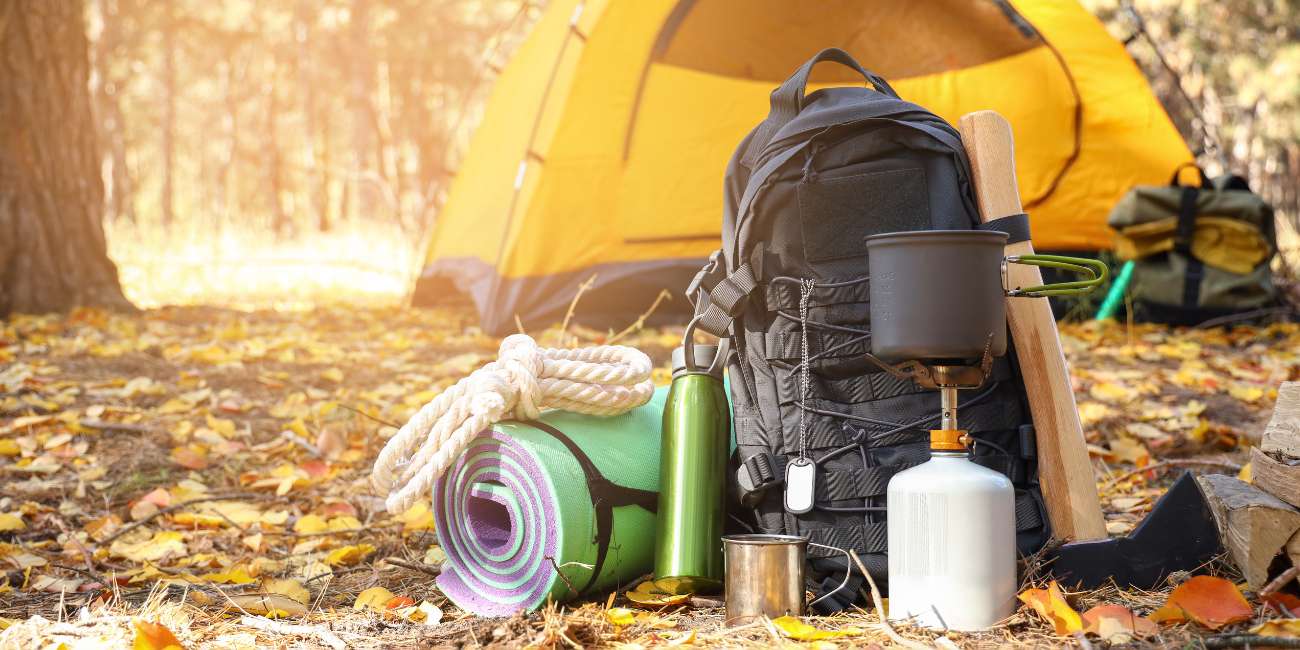
Continuing from our exploration of essential hiking gear, one of the most critical aspects that can greatly influence your safety during any outdoor adventure is your safety equipment. Here, we’ll discuss the importance of headlamps and flashlights, as well as the essential tools like a whistle and signal mirror.
Importance of Headlamps and Flashlights
When you’re out on the trail, darkness can creep up on you faster than you might anticipate. This is where having a reliable headlamp or flashlight becomes crucial. A few years ago, I was hiking with friends, and as we returned to our car, the sun dipped below the horizon unexpectedly. We were thankful to have packed a headlamp, which not only illuminated our path but also kept our hands free for navigating tricky terrain.
Why You Need Them:
- Visibility: A headlamp or flashlight allows you to see and be seen. This is especially important if you’re hiking in an area with few artificial lights.
- Hands-Free Functionality: Headlamps can be worn on your head, leaving your hands free for climbing or cooking.
- Multiple Settings: Many modern headlamps come with various brightness settings and beam patterns, providing versatility depending on the situation.
Recommendations:
- Opt for LED models for better energy efficiency and brightness.
- Consider waterproof options, especially if you plan on hiking in wet environments.
Packing a Whistle and Signal Mirror
While we often focus on tangible gear like ropes and flashlights, sometimes it’s the small items that can be lifesavers. A whistle and a signal mirror might seem like small additions to your hiking gear, but their importance cannot be overstated.
The Role of Each:
- Whistle:
- Loud and Clear: A whistle can be heard much further than your voice, especially in rugged terrain where sound may dissipate.
- Less Strain: Blowing a whistle requires less energy than shouting, which is especially beneficial if you’re in a situation where endurance is key.
- Signal Mirror:
- Visibility from Afar: Mirrors can reflect sunlight, making them visible from miles away, which is perfect if you’re trying to signal for help.
- Compact and Lightweight: Carrying a signal mirror doesn’t take up much space or add significant weight to your pack.
Practical Tips:
- Always attach your whistle to your backpack or a place where it’s easily accessible.
- Practice using a signal mirror before your hike so you know how to effectively catch attention.
In conclusion, ensuring that you have appropriate safety equipment—such as headlamps, flashlights, whistles, and signal mirrors—can make all the difference in maintaining your safety and peace of mind while out on the trails. Being prepared not only builds confidence but also enhances your overall hiking experience. By integrating these pieces of equipment into your gear list, you’ll be ready for whatever nature throws your way. Stay safe and happy hiking!
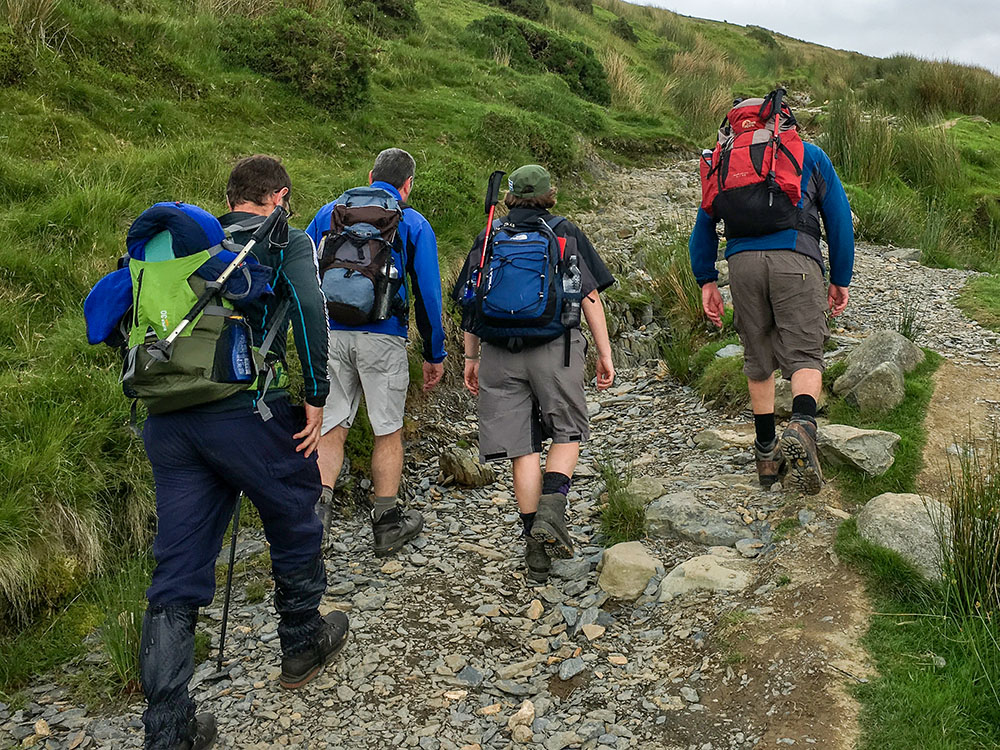
Continuing our exploration of essential hiking gear and safety, it’s crucial to pivot to a vital aspect of enjoying the great outdoors: environmental considerations. Hiking is not only about personal adventure but also about preserving the trails and nature we cherish. This brings us to two fundamental principles: Leave No Trace and responsible outdoor behavior.
Leave No Trace Principles
The Leave No Trace principles serve as a guideline to help you minimize your impact while hiking. Simply put, if we want to create lasting memories in nature, we must also ensure future generations can enjoy the same beauty. Here are the seven Leave No Trace principles to keep in mind:
- Plan Ahead and Prepare: Research your trail, weather conditions, and gear needed. Being prepared means fewer emergencies that could harm the environment.
- Travel and Camp on Durable Surfaces: Stick to established trails and campsites to avoid damaging vegetation and soil. In areas where no trails exist, consider walking on rocks or gravel.
- Dispose of Waste Properly: Bring trash bags to collect your waste and pack out what you bring in. If you’re in a remote area, consider using a trowel to dig a hole for human waste, disposing of it at least 200 feet from water sources.
- Leave What You Find: Avoid taking rocks, plants, or artifacts from the environment. Leave things as you found them for others to enjoy.
- Minimize Campfire Impact: Use a camp stove rather than building a fire, or burn only small sticks and completely extinguish your fire.
- Respect Wildlife: Observe wildlife from a distance and avoid feeding them, as this can be harmful to both the animals and humans.
- Be Considerate of Other Visitors: Keep noise levels down, yield the trail to others, and maintain a friendly attitude. This encourages a more pleasant experience for everyone.
Importance of Responsible Outdoor Behavior
Responsible outdoor behavior complements the Leave No Trace principles by focusing on ethical conduct while hiking. When you venture into nature, it’s not just about your enjoyment; it’s also about being a steward of the environment. Here’s how you can practice responsible outdoor behavior:
- Stay on Designated Trails: This reduces erosion and helps preserve the native flora and fauna. Remember, those well-trodden paths serve as effective guidelines for both hikers and the environmental impact.
- Educate Yourself: Learn about the local ecosystem and respect the wildlife and plants that call it home. Every hike can become a learning experience when you’re aware of your surroundings.
- Practice Leave No Trace in Groups: If you’re out with friends or family, discuss the principles before setting out. It helps everyone remain accountable.
- Lead by Example: Encourage others to follow suit. If you pack out your trash and follow the guidelines, they’re more likely to do the same.
While I remember hiking one particular trail, I noticed how litter could take away from the experience. The pristine views were marred by plastic bottles and wrappers carelessly strewn about. It reminded me of the responsibility we all share in protecting nature. By embracing these principles and responsible behaviors, you can ensure that your adventures enrich both your life and the environment. Let’s all commit to being conscientious hikers, creating a positive legacy for the trails we love.


